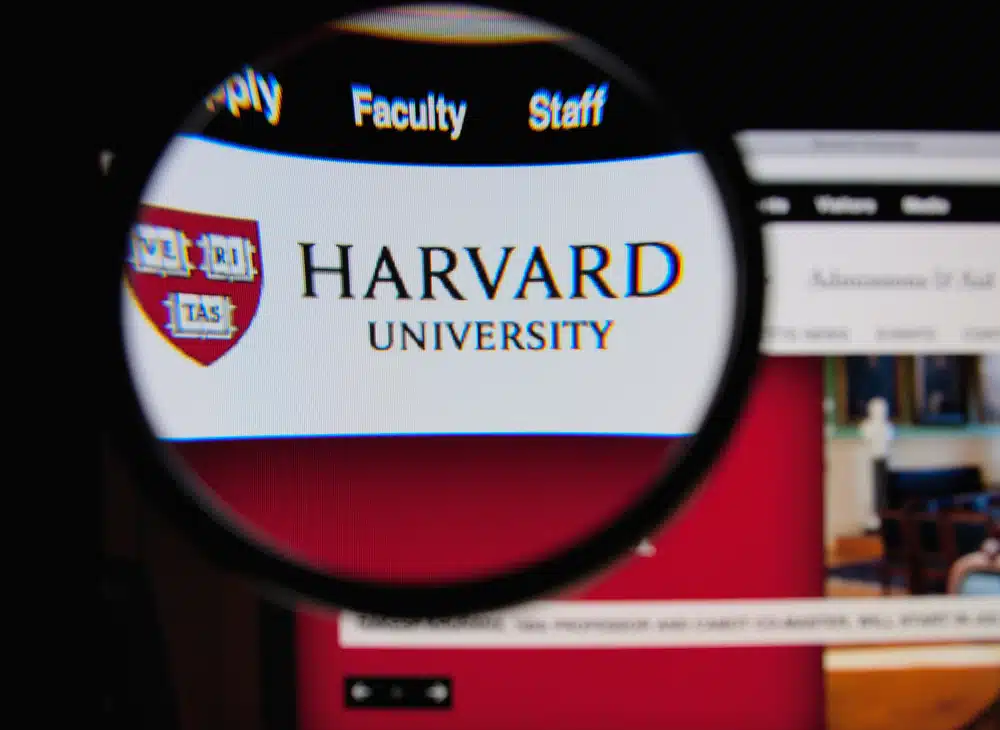Accepted to Harvard: Now What?
For high school students who have dreams of getting into one of the top schools in the country, there is little doubt that getting accepted to Harvard University is a dream come true.
After all, Harvard University is known as one of the most competitive and prestigious schools in not only the United States, but also the entire world. For that reason, and for many other reasons, it is important for anyone who has been accepted to Harvard that their job is not finished. In fact, in a lot of ways it has just begun.
At AdmissionSight, we work with intelligent and determined students every single school year with the goal of helping them get into some of the most competitive schools in the world, including Harvard. More than that, 75 percent of the students that we do work with end up getting into an Ivy League school like Harvard, or a top-10 school elsewhere in the country such as Stanford, MIT or CalTech.
It is thanks to that fact that we know exactly what it takes for students to get into schools like Harvard and what to do after getting accepted to Harvard. So, whether you have already gotten into Harvard and are trying to figure out what to do next or have not even applied to the school yet but simply want to know more about the admissions process at Harvard, then you have come to the right place!
Continue reading to learn more about how Harvard admissions work, what to do after getting accepted to Harvard and so much more.
Let’s get started!
How Harvard admissions works
When it comes to applying to some of the most competitive schools in the world, sometimes the most important tool that a student can have at their disposal is knowledge. After all, knowing what a school like Harvard’s admission committee wants out of applicants makes it a lot easier to fill out an application and make your application profile as attractive as possible.
Moreover, knowing how the admissions process at Harvard works is also a great way to set yourself up for success. While what kinds of students the school is looking for specifically from one year to the next depends on what kinds of students are currently studying at the school, the way in which the admissions process actually proceeds is typically quite similar.
There are essentially five steps to the admissions process at Harvard for the school before it makes its final decisions each year in regard to which students will make up the next incoming class. Those five steps include:
- Step 1: Recruitment and receiving applications
- Step 2: Alumni interview
- Step 3: Analyzing applications
- Step 4: Committees vote
- Step 5: Final decision
As you can see, the admissions process is quite in-depth and it is really important for students to know the ins and outs of these steps so that they can prepare as best as possible to apply to the school. Luckily, AdmissionSight has the insight into this process that comes with years and years of experience of working within this highly competitive industry. Let’s break down some of the most important aspects of all of these steps together.
Step 1. Recruitment and receiving applications
While some may assume that schools like Harvard do not really have to do much recruiting on their part at all, the truth is that the school and the different admissions committees that work within it work very hard to identify students all over the United States and world who they think may be a good fit at Harvard. In fact, the Harvard admissions office starts thinking about possible applicants well before a lot of high school students start thinking about which schools they will want to apply to.
Things usually get started when Harvard looks into students’ standardized test scores from the College Board and ACT Inc. This is true even though the SAT and ACT have both been made optional at Harvard.
The reason why the SAT and ACT are a great place for schools like Harvard to start is because they are standardized. Meaning every student is taking the same test. This helps the school identify upwards of 100,000 students who Harvard believes could be a good fit.
These students will receive invitations to apply through the mail or through email. Of course, if you are not one of the students to receive a recruitment letter, you should pay little heed and apply to the school regardless if you believe your application profile has what it takes to get you in!
From here, it is up to students to apply and determine how they would like to apply to Harvard. Of course, the school offers both a Restrictive Early Action and Regular Decision style of application and depending on how highly a student ranks Harvard on their personal list will help determine how a student wants to apply. If Harvard is your No. 1 choice, AdmissionSight highly recommends you apply to Harvard via Early Action.
Step 2. Alumni interview
Though it is not a required aspect of any student’s application to Harvard, the truth is that tens of thousands of applying students decide to take part in the schools alumni interview option each application cycle. It’s why over 15,000 Harvard alumni take part in the process themselves each year.
These interviews, which typically last approximately 60 minutes, give the applying student a chance to learn more about the experience of being a student at Harvard from someone who lived it first-hand. More importantly, however, it gives the school the chance to look at the report that the alum writes.
Alumni interviewers are given a handbook to gain important information from the applying student that they are speaking with the goals of learning about a students “potential,” “maximum growth,” and “direction.” It is essentially a way for the school to get to know an applicant more on a personal level before the school’s admission committee turns to the next step, which is analyzing the applications.
Step 3. Analyzing applications
As you likely already know, this is arguably the single most important part of the entire admissions process. It is when a student’s application, and the important information within that application are analyzed by members of the school’s admission committee.
It is when the school looks at things like a student’s grade point average in high school, what kind of classes a student was taking, what kinds of extracurricular activities a student got involved in during high school, and what kinds of personal and group achievements the student enjoyed during their four years in high school.
It is also the time in which the admissions officers look at a student’s application essay answers and personal statement, as well as the letters of recommendation that they received from the faculty members who taught them in high school.
Some of the information that admissions officers gather about for each applicant includes an applicants’ citizenship, race or ethnic group, legacy status, recruited athlete status, socioeconomic background, standardized test scores (if applicable) and more. It is also an admission officer’s job to determine the likelihood that an applying student will qualify for full financial aid.
The school has a number of different categories in which it grades its applicants on, with a 1 being the top score and a 4 being the lowest score. For example, a student with 1s across the board would be seen as a near-perfect applicant in the eyes of the admissions officer who analyzed their application.
Step 4. Committees vote
Following the reading, analyzing and ranking of all the applications that Harvard receives, the best-scoring applications are moved on to be looked at by two successive admissions office committees. A majority of each committee then has to vote “yes” on a given applicant for that student to win an offer from the school.
It is believed that all applicants with a 2-overall score or better move onto this phase. It is a very involved process and discussions and debates about specific applications can be rather lengthy.
It is also fascinating to know that the full committee can be difficult to come to a final conclusion, and decisions to accept or reject borderline applicants can go back and forth before a final decision is made. In fact, it is possible that decisions on specific applications can change until the very day that the admissions committee sends out its decisions and offers.
Step 5. Final Decision
In the middle of December, Harvard sends out its decisions for Early Action applicants, and it does the same for its Regular Decision applicants in late March.
As you can see, this is an incredibly involved process and demands a lot of work from entire offices of trained professionals to get done.
Things to know about being accepted to Harvard
If you are one of the few students to actually be offered a spot at Harvard, you are going to want to make sure that you know what to do after getting accepted to Harvard. After all, getting accepted is just the beginning of your journey. Here are some key things to know about what to do right after you are offered a spot at Harvard as well as some basic facts that any Harvard admit will want to know about the school and beginning their education there.
Submit your admissions reply form
This is incredibly crucial to do regardless of your decision. If you are offered a spot at Harvard, submit the form that can be found in your my.harvard portal. Of course, if you plan to accept your spot, you will also want to pay your admission deposit, which can be paid by credit, check or wire transfer.
Deadlines are as follows:
- All June and July starting programs – March 15
- All Fall and January starting programs – April 15
Harvard ID, Harvard Key and email address
You’ll already have your Harvard ID (HUID) and claim your HarvardKey in order to log into your portal. You will then receive directions to set up your Harvard email, you’ll want to do that about a month before your start date at the school.
You will also want to submit your photo for your physical HUID that you can pickup during your orientation check-in.
Other important considerations:
There are a number of other really important considerations for students to make after they accept their spot at Harvard, including:
- Become familiar with your program
- Learn about health insurance requirements
- Pay tuition and fees
- Find a place to live
- Determine your campus commute
Harvard FAQs
Beyond all of the information that we have already broken down together, AdmissionSight thought that it would be useful to finish up by quickly breaking down some of the most common questions that we get from the students that we work with who are accepted to Harvard.
Are there required first-year classes?
Some schools have very strict course lists for incoming freshmen as those students get more comfortable with the culture on campus and academic style of the school. While Harvard does require all first-year students to fulfill the expository writing requirement, which is either a one or two semester course depending on the student’s placement, students are free to fill the rest of their course list with courses that they are interested in and prepared for.
How do I enroll in the courses that I want to take?
At Harvard, the process of enrolling in the courses that they plan to take that semester is actually quite simple. Every student gets to take part in a week-long “shopping” period at the start of each semester. During this “shopping” period, students will visit classes that they are interested in taking and compare the choices before they officially register for the class.
This can be a pretty hard choice for students to make considering the fact that Harvard offers a total of 3,700 courses for. Undergraduate students.
How easy is it to change your concentration?
While students do have to determine their concentration for their undergraduate studies, students should not feel as though they are locked into that concentration if they find out they are not as passionate about it as they thought, or simply gain new passions along the way! In fact, about a third of undergraduates change their fields of concentration. Students can do that midway through their sophomore year. To do it, students simply have to change their concentrations in consultation with their current departmental advisors.
Can I concentrate in business, journalism, law or medicine in undergrad?
While Harvard’s undergraduate program is undoubtedly one of the most prestigious and competitive in the world, some of the hardest Harvard schools to get into include their graduate programs, such as business, law and medicine.
For that reason, a lot of high schoolers accepted to Harvard’s undergrad program ask if they can concentrate in such subjects, presumably as a way to improve their chances of one day getting into a grad program at the school.
While you can take courses related to these fields, Harvard’s academic programs are not pre-professional, in that they do not provide vocational training. Many Harvard graduates plan to continue their education in professional or graduate schools, often in these fields.
How well can I expect to get to know my professors?
Of course, one of the top reasons why Harvard is considered such an incredible school is because it is home to many professors who are world leaders in their respective faculties. For that reason, it is incredibly useful and important for students to be able to have the opportunity to not only learn from their professors during class, but also see them as mentors!
Luckily, there are a lot of opportunities for students to get to know their teachers and learn from them both within and outside of the classroom. In addition to weekly office hours, students often spend time with their professors before and after class.
There are also many occasions when professors take meals in Harvard’s 12 residential dining halls; attend gatherings in the residences of Faculty Deans, who are themselves Harvard faculty members; and participate in other programs and special events.
How large are undergrad classes?
Some introductory courses as well as several other popular courses have large enrollments. Yet, the median class size at Harvard is 12. Of the nearly 1,300 courses offered last fall, for example, more than 1,000 of them enrolled 20 or fewer students.
Congrats on your Harvard admission!
Getting into Harvard is one of the hardest things a student applying to colleges and universities can do! For that reason, it is absolutely a time to celebrate and look forward to your future education. However, the work is far from over! If you are interested in learning more about what to do once you get in, or simply want to figure out how to best improve your chances of getting accepted to Harvard, contact AdmissionSight today to schedule a free consultation.










































